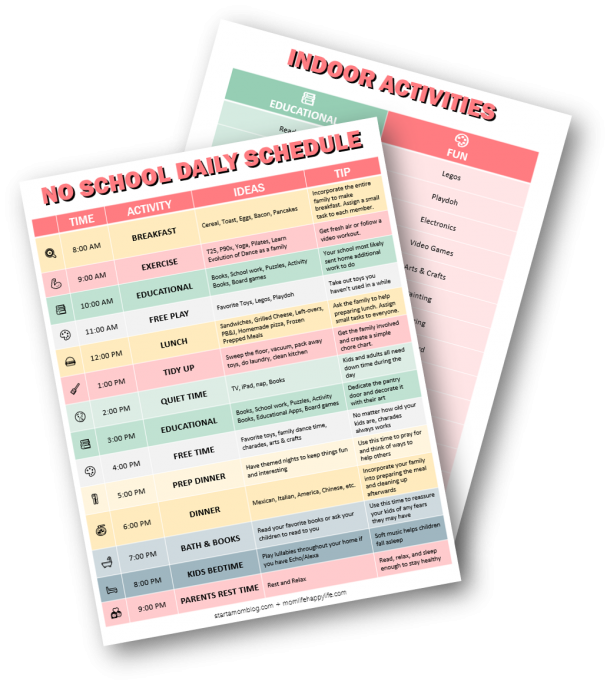When my daughter was born, I knew I was going to start off breastfeeding. I had read about the benefits, from increasing her immunity to building a healthy gut, to reduced rates of ear infections and other childhood diseases.(1) Not to mention the incredible way breastmilk changed at every age and stage to match her nutritional and immune system needs. I thought it would be easy to breastfeed, but no one prepared me for how tough it could be starting out.
I hadn’t taken a breastfeeding class and no one prepared me for the exhausting sleepless nights where I’d be waking up every couple hours to nurse and be totally exhausted the next day. The sore and painful nipples, the feeling that I was glued to the couch, breastfeeding almost every waking hour, made it seem unbearable at first. I couldn’t understand how some moms would comfortably feed their babies as if it were the most normal and natural thing in the world. What I realized was that with time and the right support and information, it be came a whole lot easier. Getting advice from other breastfeeding moms as well as consulting lactation experts helped me reach a point where breastfeeding was a no-brainer. It actually became a lot more comfortable and super convenient. I didn’t have to worry about lugging a huge bag of bottles and equipment around and could breastfeed almost anywhere on the go.
But then, as my daughter grew older and started consuming solid foods, I began wondering how and when to plan to stop breastfeeding. Different people offered different advice and I wanted to learn the best time and way to stop breastfeeding with the least amount of pain involved. I also wanted to make sure to avoid mastitis. The last thing I wanted was to have a full-fledged fever and infection wreaking havoc on my body while taking care of my family.
After doing quite a bit of research, I figured out several different ways to quit breastfeeding and then chose the option that worked best for me, my daughter and family situation. I’ll share it a little later on in this post and explain how it turned out to be fairly simple and totally painless. But first, I want to go over the different types of weaning so you have a better idea of what might work for you, where you are at.

Your Decision: Knowing How, Why & When Is Best For You
The decision to stop breastfeeding and weaning your child can be due to multiple factors, knowing how, why and when can help you make an informed choice that works best for you and your little one. There is no one-size-fits-all solution, because each person’s situation is different, but having the right information and resources can be a lifesaver. If you’re reading this, you probably want to avoid complications like plugged ducts, engorgement and mastitis.
In order to quit breastfeeding, you need to take several key steps to make the transition easier. First it helps to know the signs for identifying when a baby is ready to wean along with the types of weaning, so you can choose which would be best for your circumstance. It will also help you determine the method that would work best for you.
When To Stop Breastfeeding
Many mothers who are considering weaning are still unsure of when to stop breastfeeding. If that’s the case for you, it can help you choose the right time for you and your baby, by looking at the recommendations of the WHO and seeing what are the most common ages for weaning, globally.(9) If you are pretty sure and ready to quit breastfeeding as soon as possible, jump to the section a couple paragraphs below titled: Something To Note.
If you’re not quite sure when the right time to wean is and want more information, it can help to consider that in Western cultures, the most common ages for weaning are between 12 months and 3 years of age.8 In the US it is much less, due to various factors such as short or non-existent maternity leave policies, lack of expert lactation support after birth of a baby and when breastfeeding problems arise, and societal pressures. Only about 36% of moms breastfeed up to the age of 6 months, dropping to only 1 in 5, about 17% by 12 months.(2) In global cultures around the world, the range for weaning varies significantly, generally starting at around 2.5 years of age. Based on studies done on ancient human skeletons from different parts of the world, our human ancestors generally began weaning from between 2 and 4 years of age.3 Throughout the world and across different cultures the normal amount of time for biological weaning has been much greater than the expectations and restrictions of modern industrialized societies.(8)

So how do you choose when exactly to stop breastfeeding? The Wold Health Organization (WHO) and the American Academy of Pediatrics recommend exclusive breastfeeding until a baby is 6 months of age, and breastfeeding after the introduction of solid foods, up to 24 months.(10) The numerous benefits breastfeeding provides, such as the increased short and long term strength of your baby’s immune system, development of a healthy gut and microbiome, reduced ear infections and stomach problems, may have been some of your motivations to continue breastfeeding. However, it isn’t always possible for everyone to continue for the recommended amount of time and you should never feel like you’ve failed if you are unable to meet those targets. Every mother and family needs to be able to decide what works best for them and having non-judgmental support will help you choose what works best for you.
Something To Note
Babies under 6 months old must be fed breastmilk or Artificial Baby Milk (formula).(4) Solid foods should be phased in at around 6 months old (consult your physician first about the best time for your baby) as a compliment to continued breastfeeding/bottle-feeding until your child is ready to wean. If you want to stop breastfeeding before your child is 12 months old, you will have to substitute your feeds with ABM (formula) instead of cow’s milk as cow’s milk can be irritating and can cause problems in babies under 12 months old. You can check out the post: Is it safe to use cows milk or other milks as a supplement to breastfeeding for more info.
Two Main Ways to Stop Breastfeeding
Whatever your circumstances, there are two ways you can stop breastfeeding. Either through baby-led weaning or initiating weaning yourself. Neither is easy at first, but whether you want to gradually stop breastfeeding or immediately stop breastfeeding, having the support of a physician with extensive training in breastfeeding education and a lactation consultant such as an IBCLC can greatly help you avoid complications in the process. (You can find one in your area, through asking other moms at a local La Leche League Chapter, searching for free breastfeeding drop-in clinics or online through the ILCA website directory for IBCLCs.)
Baby-Led Weaning
Baby-led weaning is a gradual process that takes into account your baby’s maturity and readiness to wean. In baby-led weaning, you can monitor you baby’s feeding pattern and hunger cues without initiating or denying breastfeeding. As your baby grows and starts consuming solid foods on a more regular basis, they may go for longer stretches without nursing. You might also notice them spending less time at feeds and becoming more interested in snacks. Depending on their age, it might be a sign that they might be ready to wean.(8) However, it is unlikely for a baby to self-wean before they are in the 18-24 month age range, and it is possible that there are other factors such as distraction and nursing strikes that can occur in babies, that may make it seem that way. (5)
If your baby is older and seems ready to wean, you can start by consulting with your physician and local lactation consultant and if okay, reducing feeds one at a time, making sure that when you have dropped one feed, you give your child time to adjust. This can take a few days to a few weeks; night and morning feeds are usually the last to go. You can substitute snacks and drinks for the dropped feeds, if your child is at the stage where they are consuming solids. Though you might need the support of another caregiver or partner to give your child a drink (in a spill-proof cup) or snack, as it can make the transition easier.
Dropping feeds does not mean the comforts you provide your child, some that were obtained through breastfeeding, have to stop. In fact, you can hug, cuddle, rock, sing to, hold and read to your little one to provide them the attention, love and support they need.
Mother-Led Weaning
Mother-led weaning occurs without the cues of your baby. There are multiple reasons for mother-led weaning. Some are due to medical issues and the need to take a medication that is incompatible with breastfeeding. Other reasons can be due to pressure from others, feeling ready or planning to return to work, among others.
Many women don’t realize that they can continue to breastfeed, even though they plan to return to work. If you are planning to go back to work, but want to learn more about how to breastfeed while doing so, check out the book Working and Breastfeeding Made Simple by Nancy Mohrbacher. She is an Internationally Board Certified Lactation Consultant (IBCLC) and her books offer comprehensive and in-depth breastfeeding information. For a quick reference, you can also check out these 8 tips for a smooth transition back to work.
![]()
If you know you want to quit breastfeeding sooner rather than later, below are two ways moms can stop breastfeeding:
The Two Main Types of Mother-Led Weaning
-
Gradual Weaning
With gradual weaning you can drop the feeding that is least preferred, allowing a few days to pass (at least 2) for your baby and your breasts to adjust. You can substitute a snack or fun activity to replace the missed feeding, that is if your child is old enough to consume solid foods. In this case, you can also have a breakfast meal ready for when your child awakens, if you want to drop a morning feed. You can also look at alternative ways to help your child fall asleep, or have your partner or a caregiver be in charge of getting them to bed, if you’d like to drop a late night feeding.(8)
As you and your baby adjust to the reduction of each feeding, you can then eliminate another feeding, gradually continuing in this way for several weeks or a few months, until you’re down to breastfeeding every few days, until you reach a point where you are no longer breastfeeding.
If your baby is less than 6 months of age, you should only feed them breastmilk or artificial baby milk (ABM, a.k.a formula).(4) You might need to be aware of any allergies to ABMs though as some babies can show different reactions to different types. However, you will need to speak with a lactation consultant directly to help you determine what would be best for your situation and your baby. For a directory of Internationally Board Certified Lactation Consultants you can find one in your area through the International Lactation Consultant Association Directory.
-
Untimely Weaning
There are instances where you may need to stop breastfeeding sooner rather than later. Immediately stopping breastfeeding can be uncomfortable and painful, but with the right steps and expert support from an IBCLC and physician trained in lactation, you can make the transition less strenuous and potentially avoid any difficult complications such as mastitis. There are three main types of weaning considered Untimely Weaning and they are:
1) Emergency Weaning
If you have to wean immediately, chances are you are going to experience 24-48 hours of unpleasant and painful engorgement, that will slowly subside. However, you can get relief from cold cabbage leaves applied to the breasts (This is not advised for those allergic to sulpha or cabbage). Cabbage contains sinigrin rapine, mustard oil, magnesium, oxalate and sulfur heterosides.(6) Placing cold cabbage leaves on the breasts and changing them every couple of hours has anecdotally been said to relieve engorgement by many women who have tried it. Placing ice packs wrapped in cloth can also help reduce the pain and swelling associated with engorgement.

Though there are things that you definitely should not do when immediately weaning:
– DO NOT apply heat in this case as it can promote milk flow and swelling and possibly lead to mastitis.
– DO NOT bind your breasts. Outdated medical texts or older relatives might recommend breast binding, but this can actually increase the risk of plugged milk ducts, mastitis and lead to increased pain.(8)
In emergency weaning, in additional to an IBCLC you will also need to consult your physician. They might prescribe certain medications (such as antihistamines with pseudoephedrine, oral contraceptives with estrogen or others) that can help reduce your milk supply.(8)
2) Unintentional Weaning
There are cases where mothers will actually want to continue breastfeeding, but have started giving increased numbers of supplemental bottles during feeds to a point where their milk production decreases significantly. This can especially be the case during the holidays as the hectic schedule of such times can lead to greater infant fussiness and increased supplementation, which can make it more difficult to start breastfeeding again or build up a supply. You may not want to continue breastfeeding after this happens, but if you do it is possible to do so through building your supply back up or through relactation, with the guidance of a lactation consultant.(8)
3) Unavoidable Weaning
There are situations where you might need to stop breastfeeding due to reasons outside of your own control such as a serious illness or having to take a medication that can pass through your milk and would be harmful to your baby.(8) If you are unsure of whether or not a medication can be taken while breastfeeding, you need to consult your physician and a lactation consultant.
You can also get more information about which medications are safe to take while breastfeeding and which ones aren’t, by referring to Dr. Thomas Hales’ book Hale’s Medications & Mothers’ Milk.(7) (Make sure to refer to the book for the corresponding year as it is generally updated yearly). You can share the book with your physician and you should not take medications without consulting your primary care provider first and asking them whether or not it would be harmful to take while breastfeeding.
If you have time before you have to receive a specific treatment or medication and would prefer to gradually stop breastfeeding, you might be able follow the Gradual Weaning guidelines discussed earlier, if you first consult your physician and primary care provider. If you have less time, you will need to discuss the best method to stop breastfeeding with your physician and local IBCLC.
Mental and Emotional Health
Stopping breastfeeding isn’t easy for most moms, but finding the right support and resources can greatly help you. There might even be feelings of sadness or mixed emotions when you stop breastfeeding. Feelings which are quite common. Your capacity to comfort your child will not decrease when you stop breastfeeding, you can offer just as much care to your little one through the love and attention you provide.

If you experience more profound feelings of grief from stopping breastfeeding, you might benefit from seeking counselling or therapy. It is possible that you might need to see your primary care provider to get evaluated for clinical depression in such circumstances. If this happens to you, you are not alone. About 15%-20% of women experience postpartum depression and with the right strategies, treatment and guidance you can overcome it. Postpartum Support International is also an online resource that offers help for both moms and dads. However, you might also be totally ready to stop breastfeeding and not feel upset, but rather relieved and that’s okay too. You shouldn’t feel mom guilt either way.
Conclusion
After a lot of research and asking questions from others, I finally received the information and support I needed to be able to comfortably breastfeed. It went from being painful with a burning sensation every time I nursed, to completely painless and easy. I decided to breastfeed until my daughter was ready to wean and just a month before her second birthday she woke up one morning and instead of asking for milk, wanted food. So I got up and got her breakfast and that was the end of morning nursing for me. She was old enough that the amount of breastfeeding sessions throughout the day had dropped and she was eating full meals, but the morning feed was the toughest one for her to drop. To replace the night feeds, her dad would read her a story. It took a tasty evening meal the night before, and her request to have it that morning, for her to finally drop the morning nursing session. I was also REALLY careful to make sure to have breakfast ready most mornings so that she would be eager to eat her morning meal.
Breastfeeding for me did not start out being easy, it was tough at first, but I was able to get the information I needed to make the best decision for me and my family at the time. Having resources and help from experts and books allowed me to make the best decisions I could at the time, and to stop breastfeeding when it was right for me and my daughter.
The decision to stop breastfeeding is not an easy one. Knowing when and how can seem overwhelming. It depends on you, your baby and your personal circumstances. Having the right support and information can save you a lot of pain and unnecessary problems so you can focus on what’s best for you and your little one. In most cases, stopping breastfeeding requires a gradual process, but if done right can make the transition easier. So don’t hesitate to reach out to the lactation experts and other support networks in your community to get the help you need to stop breastfeeding in the way that works best for you.

References
1 World Health Organization (WHO) 10 Facts on Breastfeeding https://www.who.int/features/factfiles/breastfeeding/en/
2 Kam, K. “Why Women Don’t Nurse Longer” – https://www.parenting.com/article/moms-right-to-breastfeed
3 Kaupova S, et al., 2014 Urban and rural infant-feeding practices and health in early medieval Central Europe (9th-10th Century, Czech Republic). Am J Phys Anthropol. 155 (4): 635-651.
4 Is it safe to use cows milk or other milks as a supplement to breastfeeding https://kellymom.com/nutrition/milk/milk-supplements/
5 Do babies under 12 months self-wean? https://kellymom.com/ages/older-infant/babyselfwean/
6 Baker, G. Use of Cool Cabbage Compresses http://breastfeeding-education.com/
7 Hale, T. (2018) Hale’s Medication and Mothers’ Milk
8 Lauwers & Swisher (2016) – Counselling the Nursing Mother – Sixth Edition p. 426-429
9 World Health Organization (WHO) Breastfeeding https://www.who.int/nutrition/topics/exclusive_breastfeeding/en/
10 NICHD What are the recommendations for breastfeeding? https://www.nichd.nih.gov/health/topics/breastfeeding/conditioninfo/recommendations
Photos by (listed in order as they appear):
1) Nathan Dumlao
2) Andrae Ricketts
3) Rawpixel
Graphic – created by Insider Mom
Graphic – created by Insider Mom
4) Jenna Norman
5) Nathan Dumlao
Courtesy of Unsplash.com
Disclaimer: This post is for general informational purposes only. I am not your lactation educator counsellor or doula. This post does not create a lactation counsellor-client or doula-client relationship. The author is not liable for any losses or damages related to actions or failure to act related to the content in this article. If you need specific lactation advice, consult with your doctor and an IBCLC or physician who specializes in breastfeeding and lactation, those that are in your area.
This video shares helpful information on how to stop breastfeeding, discussed in this post:
If you want to stop breastfeeding, here’s a printable that you can download that will give you some tips on what to DO and what NOT to do when you quit breastfeeding. Click here or on the image to receive the Checklist of DO’s and DON’Ts for when you stop breastfeeding. Check it out below:






